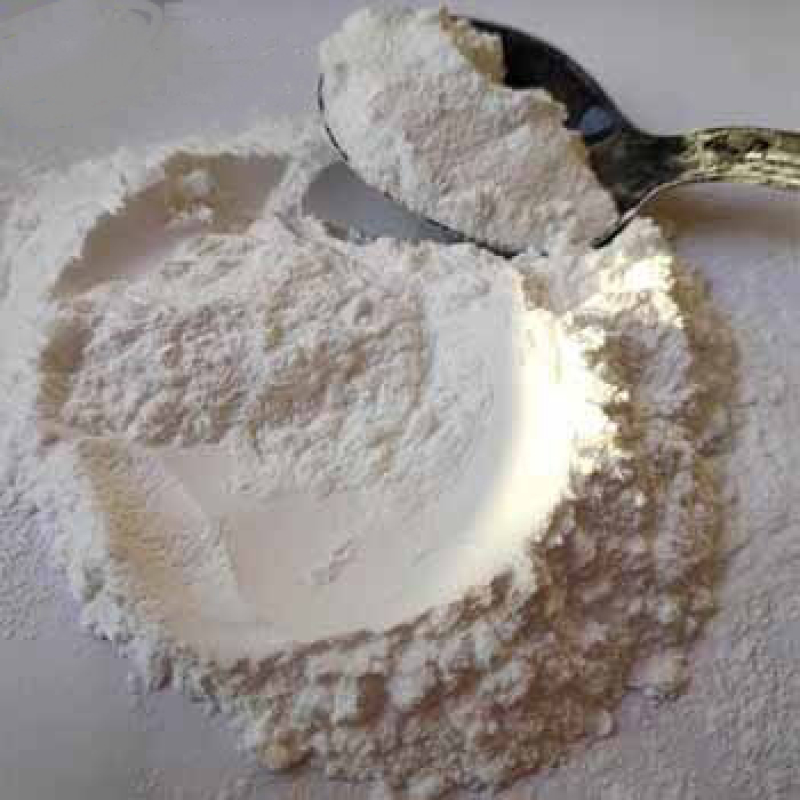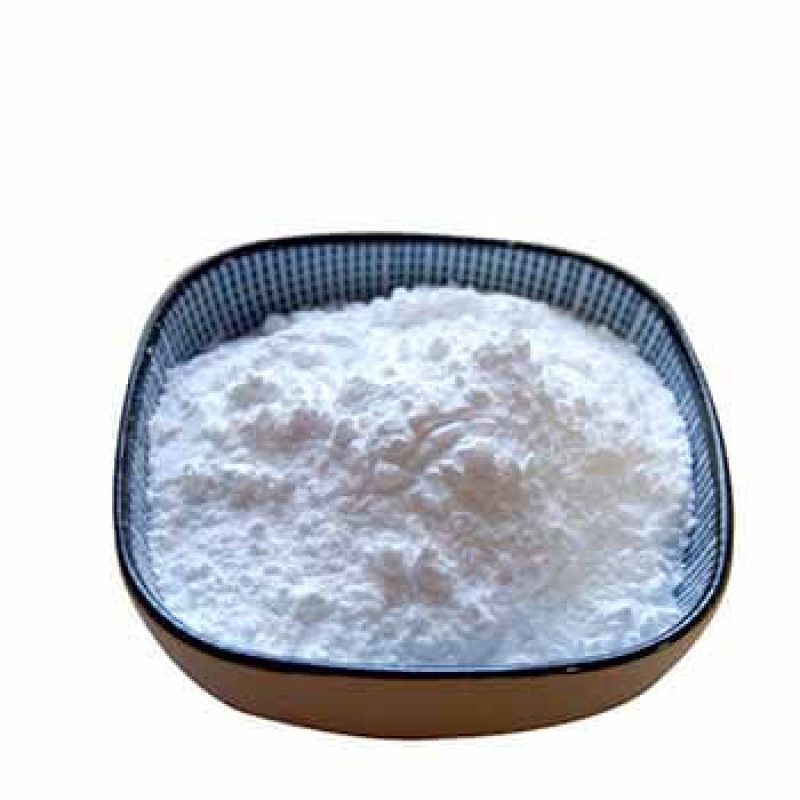Products Description of Polyethylene Glycol CAS#25322-68-3Polyethylene glycol is referred to as "PEG". It is a high molecular weight compound formed by intermolecular dehydration condensation of ethylene glycol. Chemical formula HOCH2(CH2OCH2)nCH2OH. Where n is greater than 4. Average molecular weight 200-7000. The number after the commercial polyethylene glycol indicates the average molecular weight. For example, polyethylene glycol-400 means that the average molecular weight of the commercial polyethylene glycol is about 400.Colorless viscous liquid or white solid.
Contact Now
Products Description of Silver acetate CAS#563-63-3Silver acetate is an off-white solid powder at room temperature and pressure. It has average solubility in water. 1L of water can dissolve about 10.2g of silver acetate. It has good solubility in organic solvents such as ethanol, methanol and acetone.
Contact Now
Calcium beta-hydroxy-beta-methylbutyrate Chemical PropertiesMelting point >215°C (dec.)storage temp. Inert atmosphere,Room Temperaturesolubility Water (Slightly)form Powdercolor WhiteWater Solubility Soluble in water.Stability:HygroscopicInChIInChI=1S/C5H10O3.Ca.2H/c1-5(2,8)3-4(6)7;;;/h8H,3H2,1-2H3,(H,6,7);;;InChIKeyWLJUMPWVUPNXMF-UHFFFAOYSA-LSMILESC(C(=O)O)C(O)(C)C.[Ca]CAS DataBase Reference135236-72-5(CAS DataBase Reference)Safety InformationHS Code 2920907090Product Application of Calcium beta-hydroxy-beta-methylbutyrate CAS#135236-72-5Used as phar
Contact Now
Products Description of Calcium hypochlorite CAS#7778-54-3The chemical formula of bleaching powder is CaCl2·Ca(ClO)2·2H2O. It is a white powdery substance. Its composition varies with the preparation conditions. It is generally a hydrated complex salt composed of calcium hypochlorite, calcium chloride and unreacted calcium hydroxide. Its active ingredient is calcium hypochlorite. Bleaching powder has strong oxidizing, corrosive and irritating properties. It can decompose when it comes into contact with water, ethanol or inorganic acid.
Contact Now
Chlorobenzene CAS# 108-90-7Chlorobenzene is a monocyclic fragrant compound with one hydrogen atom on the benzene ring substituted with one chlorine. It is produced by means of chlorination of benzene in the liquid segment with a catalyst. Chlorobenzene is a colourless, flammable liquid with a candy almond-like odor, at ambient temperature with a incredibly excessive vapour pressure, reasonable octanol-water partition coefficient (log 2.8) and average to low water solubility (497.9 mg/L @ 25℃).
Contact Now
Products Description of Alginic acid CAS#9005-32-7Alginic acid is a viscous organic acid, also known as alginic acid and alginic acid. The product is white to light yellow-brown powder. The average molecular weight is about 240,000. Melting point>300℃. It is slightly soluble in hot water, and the viscosity of its aqueous solution is 4 times higher than that of starch. It is insoluble in cold water and organic solvents, and slowly dissolves in alkaline solutions.
Contact Now
Products Description of 6-Bromo-1-chloroisoquinoline CAS#205055-63-61-Chloro-6-bromoisoquinoline is a pharmaceutical intermediate and a yellow powdery solid.6-Bromo-1-chloroisoquinoline Chemical PropertiesBoiling point 349.5±22.0 °C(Predicted)density 1.673storage temp. under inert gas (nitrogen or Argon) at 2-8°Cpka1.48±0.38(Predicted)form powdercolor Light yellow to yellowSafety InformationHazard Codes TRisk Statements 25-38-41Safety Statements 26-45RIDADR UN2811HS Code 2933499090Product Application of 6-Bromo-1-chloroisoquinoline CA
Contact Now
Products Description of 4-Chloroquinoline CAS#611-35-84-Chloroquinoline is a key intermediate commonly used in the synthesis of quinoline derivatives with important biological activities.
Contact Now
Products Description of 4'-HydroxyacetophenoneCAS#99-93-4Since p-hydroxyacetophenone contains hydroxyl and ketone groups on the benzene ring in its molecule, it is often used as an intermediate in organic synthesis to react with other compounds to synthesize many important substances.
Contact Now
Products Description of 4-Chloropyridinium chloride CAS#7379-35-34-Chloropyridine hydrochloride can be used as a pharmaceutical intermediate in laboratory organic synthesis and chemical pharmaceutical research and development.
Contact Now
Products Description of 4-Acetylpyridine CAS#1122-54-94-Acetylpyridine is an organic compound with the molecular formula C7H7NO.4-Acetylpyridine Chemical PropertiesMelting point 13-16 °C(lit.)Boiling point 212 °C(lit.)density 1.095 g/mL at 25 °C(lit.)refractive index n20/D 1.529(lit.)Fp >230 °Fstorage temp. Inert atmosphere,Room Temperaturesolubility Chloroform, Ethyl Acetateform LiquidpkapK1: 3.505(+1) (25°C)Specific Gravity1.110 (20/4℃)color brown-yellowishWater Solubility insolubleBRN 107629InC
Contact Now
Products Description of 1-(4-Chlorophenyl)Piperazine Dihydrochloride CAS#38869-46-4Para-Chlorophenylpiperazine (pCPP) is a psychoactive drug of the phenylpiperazine class. It is relatively obscure, with limited human use, and produces slightly psychedelic effects.
Contact Now
Products Description of Sodium hexametaphosphateCAS#10124-56-8This product is a white crystalline powder with a specific gravity of 2.484 (20°C). It is easily soluble in water but insoluble in organic solvents and has a strong hygroscopic function.
Contact Now
Products Description of Sodium tripolyphosphateCAS#7758-29-4 Sodium tripolyphosphate, also known as pentasodium phosphate, sodium pyrometaphosphate, STPP, pentasodium tripolyphosphate. White powdery crystals, good fluidity, relative molecular mass 367.86, melting point 622℃, easily soluble in water, its aqueous solution is alkaline. Commonly used in food as a moisture retainer, quality improver, pH regulator, metal chelator.The aqueous solution of sodium tripolyphosphate is weakly alkaline (the pH value of a 1% aqueous solution is about 9.7).
Contact Now
Products Description of Sodium Copper Chlorophyllin CAS#11006-34-1Using natural green plant tissues, such as silkworm excrement, clover, alfalfa, bamboo and other plant leaves as raw materials, extracting with organic solvents such as acetone, methanol, ethanol, petroleum ether, etc., replacing the central magnesium ions of chlorophyll with copper ions, and saponifying it with alkali, removing the methyl and phytol groups, and forming the carboxyl group to become disodium salt. Therefore, sodium copper chlorophyll is a semi-synthetic pigment.
Contact Now
Products Description of Sodium MethoxideCAS#124-41-4Sodium methoxide is also called sodium methoxide. It is a kind of alcohol salt generated by methanol, with the chemical formula CH3ONa. It is a strong base commonly used in organic synthesis. Sodium methoxide is usually stored as a solution in alcohol solvents such as methanol and ethanol. It dissolves in ether to form a suspension, is sensitive to moisture, and decomposes into methanol and sodium hydroxide when it comes into contact with water: CH3ONa+H2O→CH3OH+NaOH. Sodium methoxide products come in two forms: solid and liquid.
Contact Now
Products Description of Sodium gualenate CAS#6223-35-4Sodium azulene sulfonate is unstable and will decompose under light, air oxidation and high temperature, and it is easy to remove the sulfonic acid group.
Contact Now
Products Description of Color Developing Agent CD-3 CAS#24567-76-8White powder crystalColor Developing Agent CD-3 Chemical PropertiesWater Solubility Soluble in waterform powder to crystalcolor White to Light yellow to Light orangeInChIInChI=1S/2C12H21N3O2S.3H2O4S/c2*1-4-15(8-7-14-18(3,16)17)11-5-6-12(13)10(2)9-11;3*1-5(2,3)4/h2*5-6,9,14H,4,7-8,13H2,1-3H3;3*(H2,1,2,3,4)InChIKeyNPDFXFLCEDDWEG-UHFFFAOYSA-NSMILESC1(=CC=C(N)C(C)=C1)N(CC)CCNS(=O)(=O)C.C1(=CC=C(N)C(C)=C1)N(CC)CCNS(=O)(=O)C.S(=O)(=O)(O)O.S(=O)(=O)(O)O.S(=O)(=O)(O)OSafety InformationHazard Codes Xn;N,N,XnRisk
Contact Now
Products Description of (1H-indol-3-yl)(2,2,3,3-tetramethylcyclopropyl)methanone CAS#895152-66-6White powder(1H-indol-3-yl)(2,2,3,3-tetramethylcyclopropyl)methanone Chemical PropertiesBoiling point 375.0±15.0 °C(Predicted)density 1.099±0.06 g/cm3(Predicted)storage temp. 2-8°Csolubility DMF: 50 mg/ml; DMF:PBS (pH 7.2); (1:7): 0.13 mg/ml; DMSO: 33 mg/ml; Ethanol: 17 mg/mlform A crystalline solidpka15.50±0.30(Predicted)InChIInChI=1S/C16H19NO/c1-15(2)14(16(15,3)4)13(18)11-9-17-12-8-6-5-7-10(11)12/h5-9,14,17H,1-4H3InChIKeyWYZQBEQQQKCTHM-UHFFFAOYSA-NSMILESC(C1C2=C(NC=1)
Contact Now
Triethylene glycol CAS# 112-27-6Triethylene glycol is a clear, colorless, viscous, secure liquid with a barely sweetish odor. Soluble in water; immiscible with benzene, toluene, and gasoline. Combustible. Because it has two ether and two hydroxyl companies its chemical residences are closety associated to ethers and foremost alcohols. It is a desirable solvent for gums, resins, nitrocellulose, steam-set printing inks and timber stains.
Contact Now
Monopotassium phosphite CAS#13977-65-6Potassium dihydrogen phosphite, a chemical with the molecular formula KH2PO3, can be used as a direct bactericide and complexing agent for calcium and magnesium ions in industrial circulating water.
Contact Now
Products Description of Poly(dipropyleneglycol)phenyl phosphite CAS#80584-86-7Colorless liquidFactory and Equipment ShowFast delivery timeInventory 2-3 working days New production 7-10 working days
Contact Now
Products Description of Antioxidant 168 CAS#31570-04-4Antioxidant 168 is a phosphite antioxidant with excellent performance. It has strong extraction resistance, is stable against hydrolysis, and can significantly improve the light stability of products. It can be used in combination with a variety of phenolic antioxidants. . For example, Cyanox2777 developed by the American company Cyanamid is a compound of antioxidant 168 and phenolic antioxidant 1790. The combined use of phosphite and phenolic antioxidants can give full play to the synergistic effect.
Contact Now
Products Description of 3-Acetyl-2,5-Dichlorothiophene CAS#36157-40-13-Acetyl-2,5-dichlorothiophene is an organic intermediate and pharmaceutical intermediate. 3-Acetyl-2,5-Dichlorothiophene Chemical PropertiesMelting point 37-40 °C (lit.)Boiling point 120-122°C 4mmdensity 1.4514 (estimate)Fp >230 °Fstorage temp. Keep in dark place,Inert atmosphere,2-8°Cform solidcolor White to Yellow to OrangeBRN 121288CAS DataBase Reference36157-40-1(CAS DataBase Reference)NIST Chemistry Reference2,5-Dichloro-3-thienyl methyl ketone(36157-40-1)Sa
Contact Now


































